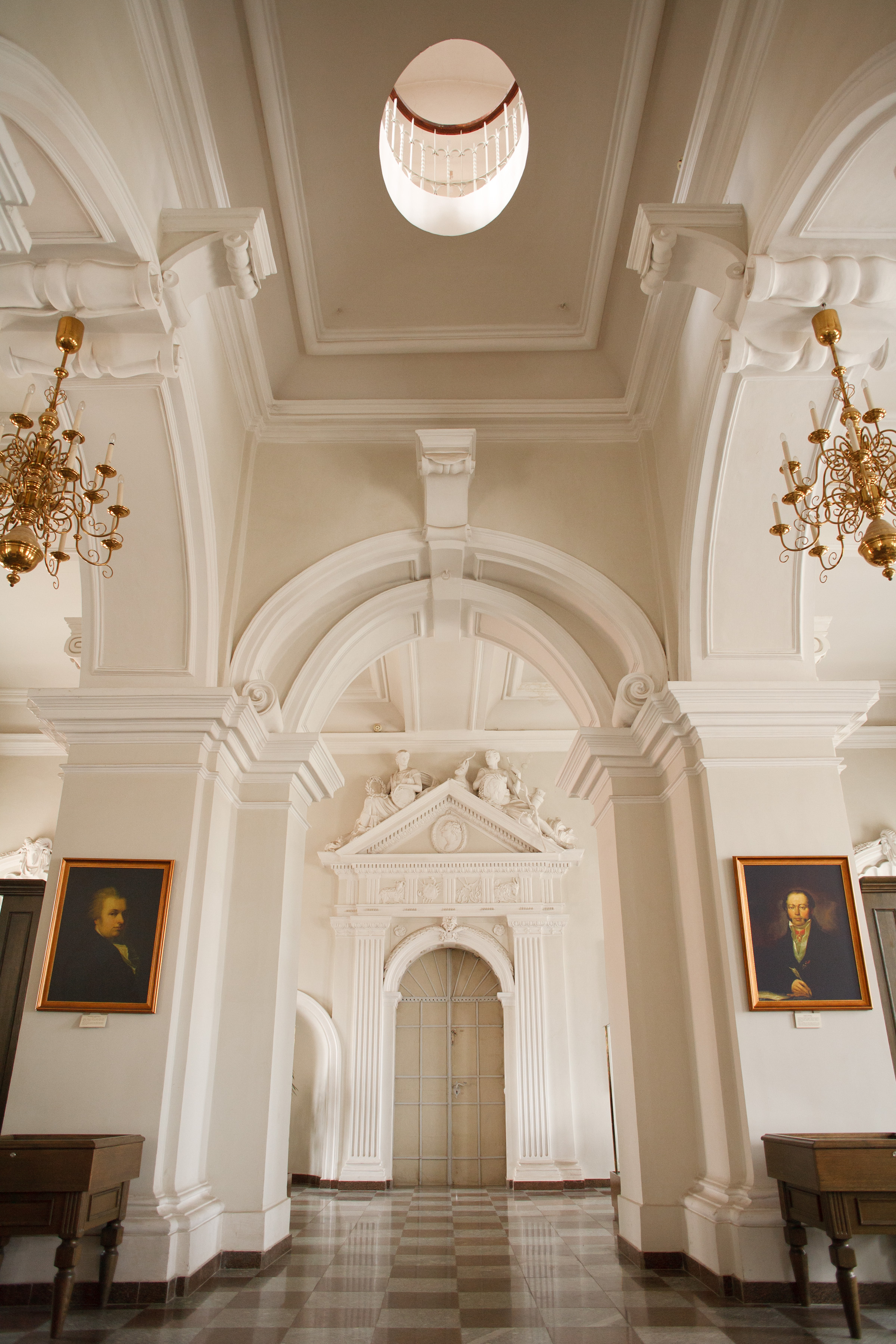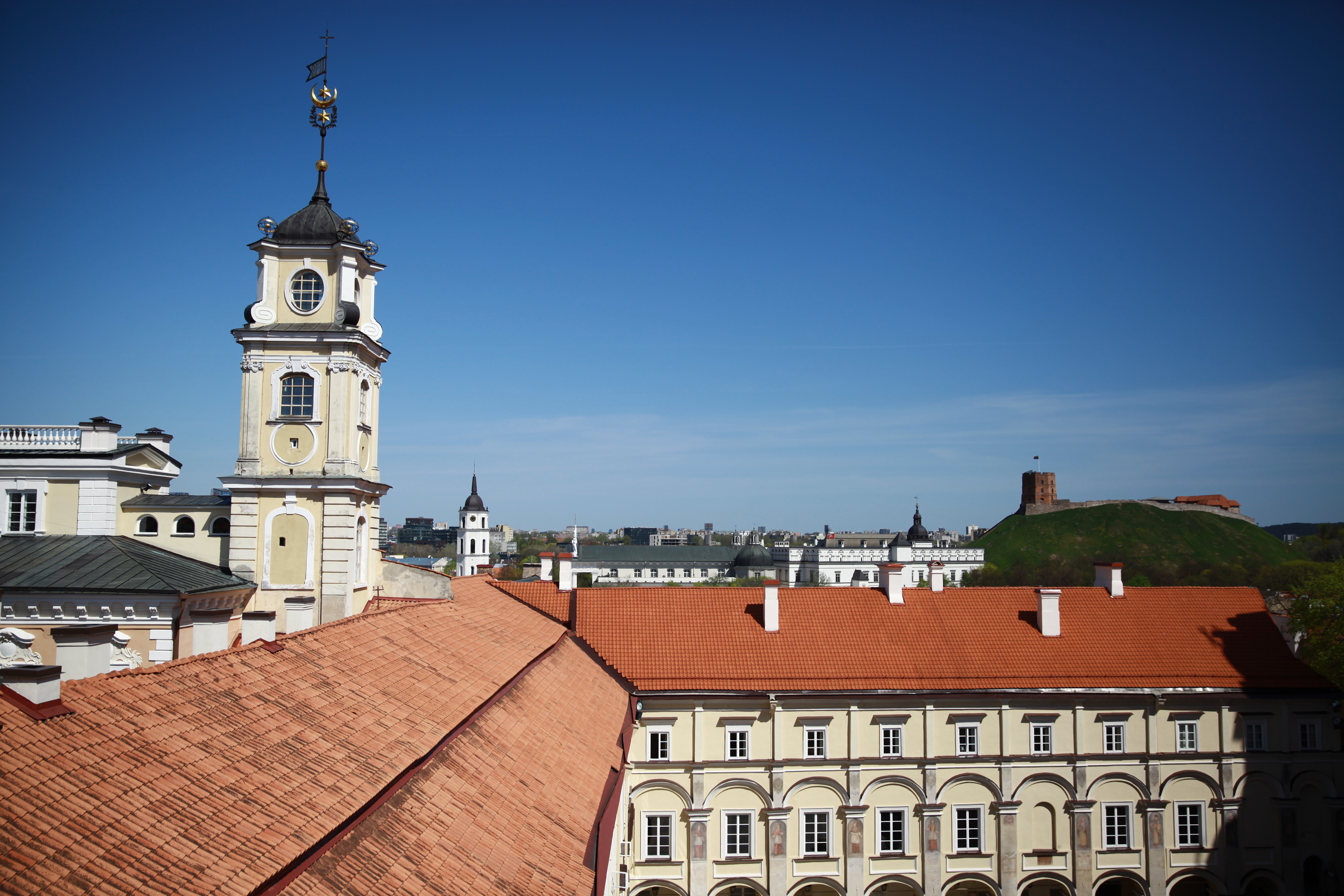History

The Library was founded in 1570 by the Jesuits who came to Lithuania at the invitation of the Bishop of Vilnius Walerian Protasewicz. In 1579, after confirming the status of a university for Vilnius Jesuit College, the library officially became university library. Private collections of King Sigismund Augustus and Suffragan to the Bishop of Vilnius Georgius Albinius formed the core part of the Library. Extensive book collections were eventually bequeathed to the Library by other hierarchs of the Catholic Church and secular noblemen. During two hundred years of the Jesuits’ University, holdings of the Library increased from 4.5 thousand to 11 thousand volumes (in 1773). On the other hand, the seventeenth and eighteenth centuries were not favourable to the Library as various wars, fires and plunders depleted it time and again.
After the Suppression of the Society of Jesus in 1773, Vilnius University was taken over by the Educational Commission and that meant a shift in research focus – the Library’s holdings were supplemented with books on natural sciences and medicine.
After the Third Partition of the Polish-Lithuanian Commonwealth, Lithuanian became a part of the Russian Empire. Since 1815 readers were allowed to borrow books and read them at home. The Library was moved to the current Aula Parva, a reading room with 90 places for reading was arranged there; an alphabetical card catalogue followed by an index one was launched.
On 1 May 1832 Tsar Nicolas I issued an order to close Vilnius University down. Major part of the Library stocks was delivered from Vilnius to other educational institutions of Imperial Russia. In 1856 former premises of the Library housed the Museum of Antiquities (established by the Archaeological Commission), which among other things had a Reading Cabinet. In 1865 the Museum of Antiquities with its Reading Cabinet was rearranged into Vilnius Public Library and museum.
In 1919 Vilnius was annexed by Poland. Vilnius University was re-established as a Polish university named after King Stephen Báthory, which was operating until 1939. In 1939 Vilnius was given back to Lithuania, but the work of the Library was interrupted shortly by the Second World War. After the war a pressing necessity arose to rebuild the ruined University and the Library. The Library managed to recover around 13 thousand books that were taken away from it in different periods.
In 1968 the Restoration Department and in 1969 the Cabinet of Prints and Drawings were founded at the Library.
After Re-establishment of Lithuania’s Independence, the most pressing issue was modernization of the Library. Since 1993, the Library maintains an online electronic catalogue. Since 2000 in collaboration with the other Lithuanian institutions, the Library has started subscribing to databases.
Since 2013 a new modern building of the Library – the Scholarly Communication and Information Centre – was opened in the Saulėtekis Technology Valley.

 Vilnius University Library is an academic library of the national significance that was founded back in 1570 in Vilnius. It is the earliest academic library in the Baltics. The Library consists of the Central Library, the Scholarly Communication and Information Centre (SCIC), as well as libraries of faculties and centres. The Central Library still works in authentic 16th-century premises that are an integral part of the old campus of Vilnius University. The SCIC – the modern part of the Library equipped with most advanced technologies and situated in Saulėtekis avenue – provides users with opportunity to study or work 24/7.The mission of Vilnius University Library is to provide high quality information services while fully meeting the needs of students, professors and researchers, to participate in the open science initiatives, and to open the rich scholarly and cultural heritage kept at the Library to the public. Vilnius University Library is open, modern and dynamic, while the environment it provides is perfect for individual and group work or simply relaxing with a book.
Vilnius University Library is an academic library of the national significance that was founded back in 1570 in Vilnius. It is the earliest academic library in the Baltics. The Library consists of the Central Library, the Scholarly Communication and Information Centre (SCIC), as well as libraries of faculties and centres. The Central Library still works in authentic 16th-century premises that are an integral part of the old campus of Vilnius University. The SCIC – the modern part of the Library equipped with most advanced technologies and situated in Saulėtekis avenue – provides users with opportunity to study or work 24/7.The mission of Vilnius University Library is to provide high quality information services while fully meeting the needs of students, professors and researchers, to participate in the open science initiatives, and to open the rich scholarly and cultural heritage kept at the Library to the public. Vilnius University Library is open, modern and dynamic, while the environment it provides is perfect for individual and group work or simply relaxing with a book.
 Tradition
Tradition Responsibility
Responsibility Partnership
Partnership Openness
Openness Drive
Drive
